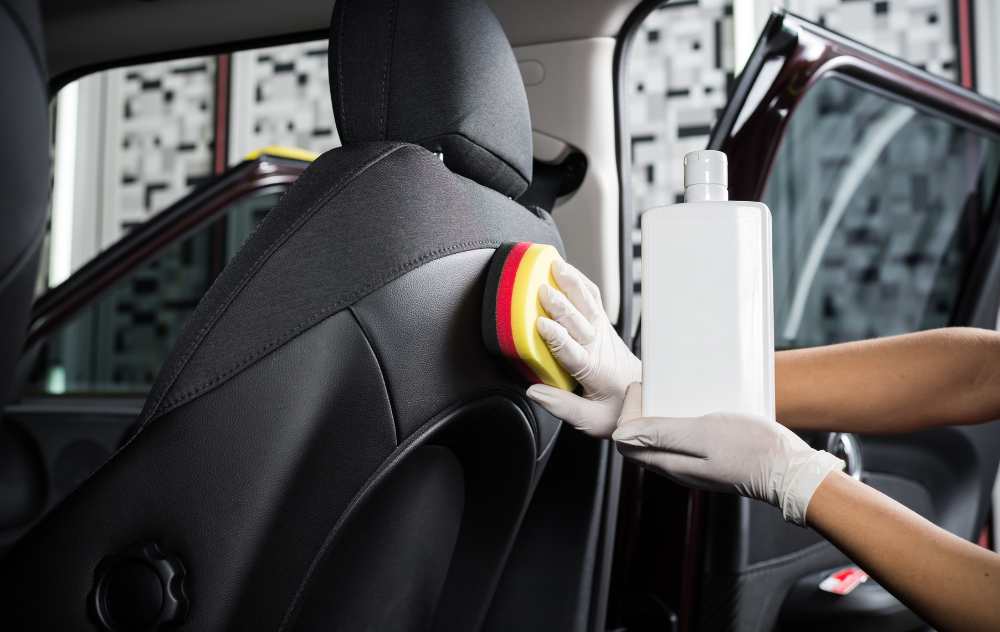Leather is a luxurious and durable material that requires proper maintenance to keep it looking new. Over time, dirt, oil, stains and other debris can accumulate on leather surfaces. Cleaning dirty leather may seem like a daunting task, but with the right tools and techniques, you can restore your leather items back to their original shine.
The first step in cleaning dirty leather is to identify the type of leather you have. Different types of leather require different cleaning methods and products. For example, suede should not be cleaned with water as it can cause damage to the material. Once you have identified the type of leather you have, gather all necessary cleaning supplies such as a soft-bristled brush or sponge, mild soap or cleaner specifically designed for use on leather Buick car repair.
Why leather needs cleaning
Leather is a material that adds elegance and sophistication to any outfit. Whether it’s a leather jacket, shoes or bags, the fabric has a timeless appeal that never goes out of style. However, with regular use, leather can accumulate dirt, grime and stains over time.
Cleaning dirty leather is essential to maintain its quality and prevent damage. Dirt particles can scratch the surface of the leather while body oils and sweat can penetrate the material, causing discoloration and foul odor. Additionally, exposure to sunlight and humidity can cause cracks in the leather’s surface if not cleaned regularly.
To clean dirty leather effectively, you need to start by wiping off any excess dirt or debris using a soft cloth or brush. Then apply a mild soap solution on a damp cloth and gently rub onto the surface of the leather in circular motions.
Assessing the damage:
Assessing the damage is the first step in determining how to clean dirty leather. It is important to identify whether the dirt or stain is on the surface of the leather or has penetrated into it, as this will determine what cleaning method should be used.
If the dirt or stain is on the surface, a simple wipe with a damp cloth should do the trick. However, if it has penetrated into the leather, more aggressive cleaning methods may be necessary. This can include using a specialized leather cleaner or even resorting to hiring professional cleaners.
It’s also important to consider any additional damage that may have been done to the leather, such as scratches or cracks. These issues can require separate treatment and repair before attempting any cleaning methods. Properly assessing and addressing all damage will ensure that your leather stays looking its best for years to come.
Identifying different types of stains and dirt
Leather is a timeless material, prized for its durability and appearance. However, it can be challenging to keep leather clean, especially when it becomes stained or dirty. The first step in cleaning dirty leather is identifying the type of stain or dirt that needs to be removed.
Different types of stains require different cleaning methods. For example, water stains can often be removed by rubbing the affected area with a damp cloth and allowing it to air dry. Oil-based stains, on the other hand, may require more aggressive cleaning methods like using a mild detergent and warm water solution.
Identifying the type of dirt present on your leather is also crucial in determining the right cleaning method. Dust particles can easily accumulate on leather surfaces over time and can be removed using a soft-bristled brush or vacuum cleaner.
Preparing the leather:
Leather is a durable and versatile material used in making various products, from shoes to bags to furniture. However, over time, leather can become dirty and worn-out due to exposure to dust, dirt, and oils. Cleaning dirty leather requires preparation and careful attention to detail.
Firstly, start by removing any loose debris or dirt from the surface of the leather using a soft-bristled brush. This will prevent further damage when cleaning the leather. Next, use a mild soap or detergent mixed with water to clean the surface of the leather. Avoid using harsh chemicals or abrasive materials that can cause discoloration or damage.
After cleaning the surface of your leather item, you need to condition it so that it retains its suppleness and luster. Use a high-quality conditioner meant for leather products and apply it evenly on the surface using a soft cloth.
Gathering necessary supplies and removing debris
Leather is a material that is often used for furniture, clothing, and accessories. However, over time, it can become dirty and require cleaning to maintain its appearance and longevity. Cleaning leather may seem like a daunting task, but with the right supplies and techniques, it can be done easily.
To begin cleaning leather, gather necessary supplies such as a soft-bristled brush or vacuum cleaner to remove debris from the surface of the leather. This step is crucial as dirt and dust can scratch the surface of the leather during cleaning if not removed beforehand. Next, mix a small amount of mild soap with warm water in a bowl or spray bottle. It’s important to use minimal water as too much moisture can damage the leather.
Using a soft cloth or sponge dampened with the soapy solution, gently wipe down the surface of the leather in circular motions.
Cleaning the leather:
Cleaning the leather of your furniture, jackets, bags or shoes is essential for their longevity and appearance. But cleaning dirty leather can be a daunting task if you don’t know how to do it safely. Here are some tips on how to clean dirty leather without causing any damage.
Firstly, before cleaning the leather, remove any dust or debris with a soft cloth or brush. This will prevent dirt from being ground into the surface of the leather during cleaning. Then, test any cleaner on an inconspicuous area first to make sure it won’t damage the surface of your leather item. For mild dirt and stains, mix equal parts water and white vinegar in a spray bottle and spray onto a microfiber cloth. Gently rub onto the stained area until clean and then dry off with another clean cloth. For stubborn stains such as ink or oil-based spills, use rubbing alcohol instead of vinegar solution.




